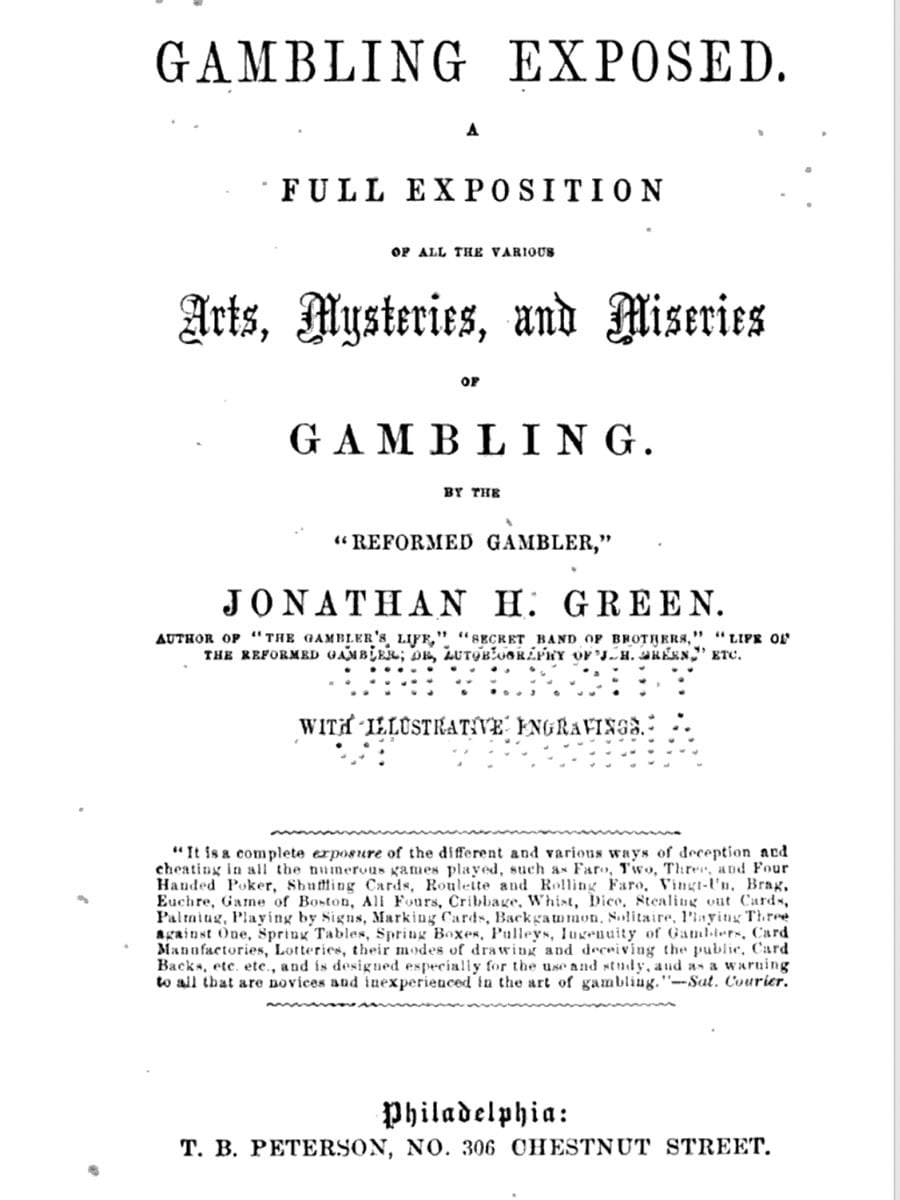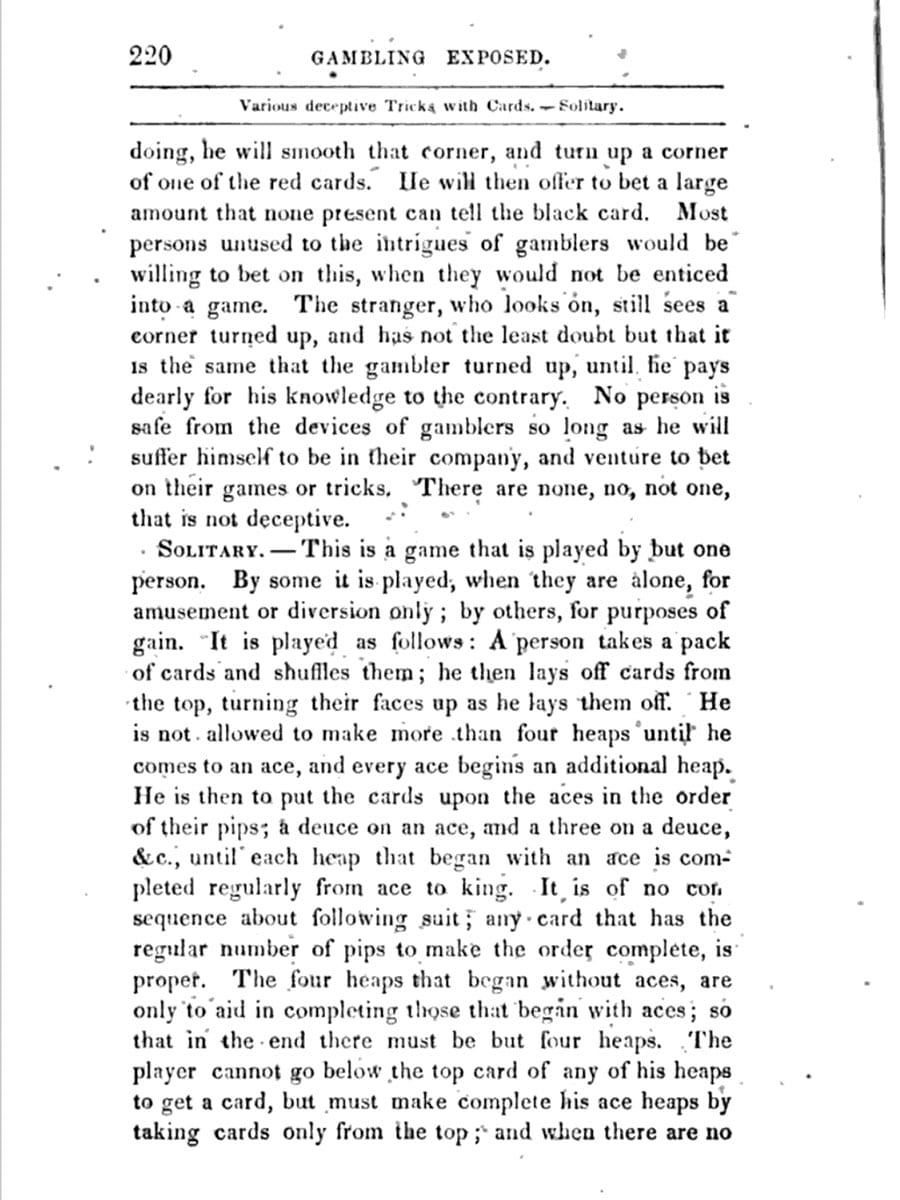- Name Book: Gambling Exposed – A Full Exposition of all the various Arts, Mysteries, and Miseries of Gambling
- Author: Jonathan H. Green
- Year: 1857
- Location: Philadelphia, USA

Gambling Exposed A full exposition of all the various Arts, Mysteries, and Miseries of Gambling by the “Reformed Gambler” Jonathan H. Green With illustrative Engravings.
In this book, Jonathan H Green, “the reformed Gambler,” describes a complete exposure of the different and various ways of deception and cheating in all the numerous games played at that time.
The writer Jonathan Green, a former gambling addict, turned into an anti-gambler activist.
“A warning to all that are novice and inexperienced in the art of gambling”
On page 220 of Gambling Exposed, in the chapter “Various deceptive tricks with Cards – “Solitary,” J. Green describes a game of Solitaire in detail. The game is later identified in other literature as “Old Patience” of “Sir Tommy” and, according to Wikipedia, the ancestor of all Solitaires.
“This is a game that is played by one person. By some, it is played when they are alone, for amusement or diversion only, by others for purposes of gain”

“A person takes a deck of cards and shuffles them
He then lays off cards from the top, turning their faces up if he lays them off
He is not allowed to make more than 4 heaps until he comes to an Ace
Every Ace begins an additional heap
He is then to put the cards upon the Aces in the order of their pips. (a deuce on an Ace, A three on a Deuce)
Until each heap that began with an Ace is completed regularly from ace to king
It is of no consequence about following suit; Any card that has the regular number of pips to make the order complete is proper
The four heaps that began without Aces are only to aid in completing those that began with Aces: So that in the end there must be but four heaps.
The player can not go below the top card of any of his heaps to get a card but must make complete his ace heaps by taking cards only from the top.
When there are no cards on the top of his heaps, which begin without aces that will suit to go on the ace heaps, he draws from the top of the pack until he gets one to suit.
Those that will not suit he lays upon his heap that began without aces, and as long there is any on those heaps that will suit his ace heaps, he does not draw from the pack”
Jonathan H. Green about the chance to win:
“This game is difficult to play successfully; a common player might not put them up completely more than once in a dozen times; but I would advise all not to bet on this game; for if a man should offer to bet that he can do it once in every three times trying, he will do it, for gamblers never bet on tricks they cannot perform”.
This book provides us with new knowledge about the history of Patience and Solitaire:
- Sir Tommy / Old Patience is among the oldest variants of Solitaire
- Although all early references to the Solitaire game genre are called games of patience, this particular game is called Solitary, the name from which Solitaire is derived.
- Based on this description and the context (a book about Gambling) in which the solitary card game is described, we can conclude that Solitaire (Old Patience) was played as a gambling solitaire in gambling houses.